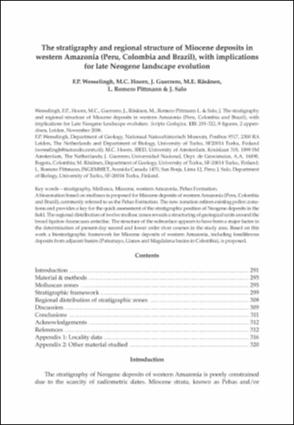Please use this identifier to cite or link to this item:
https://hdl.handle.net/20.500.12544/665Files in This Item:
| File | Description | Size | Format | |
|---|---|---|---|---|
| Wesselingh-The_stratigraphy_and_regional_structure.pdf | Artículo indizado | 826.77 kB | Adobe PDF | View/Open |
This item is licensed under a Creative Commons License












